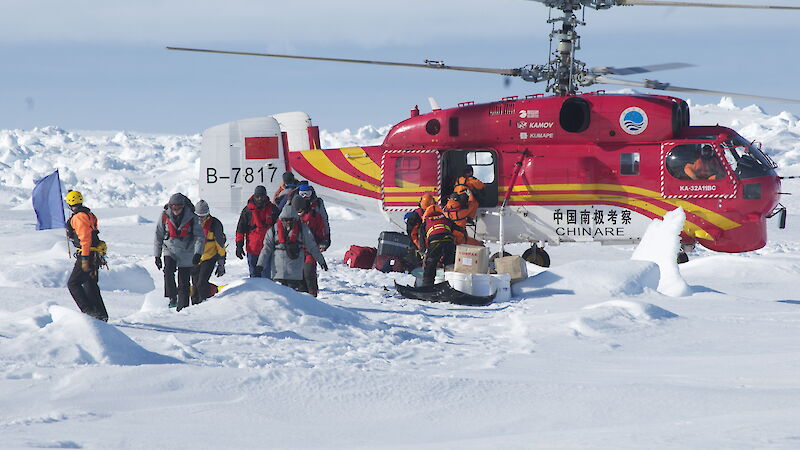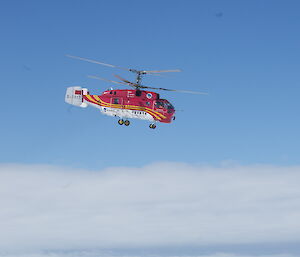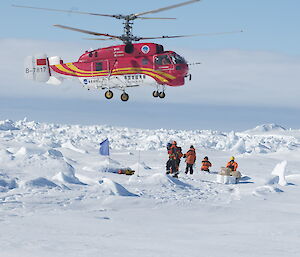The Australian Government icebreaker Aurora Australis has welcomed aboard 52 passengers from the Russian-flagged MV Akademik Shokalskiy which has been trapped in sea ice in the Commonwealth Bay region for more than a week.
Weather conditions abated late yesterday and the passengers were transferred to the Australian Antarctic Division’s icebreaker in a complex operation relying on good weather and involving a number of steps.
A temporary helicopter landing site had been marked on the sea ice near the MV Akademik Shokalskiy by its passengers and crew.
A helicopter from China’s Antarctic program vessel Xue Long, which has also been assisting in the rescue, transferred passengers to another helipad on the sea ice next to the Aurora Australis.
The passengers and essential equipment were ferried between the vessels in seven transfers over approximately 14 nautical miles of sea ice.
The Aurora Australis was undertaking resupply at Casey station more than 800 nautical miles away when asked by the Australian Marine Safety Authority to assist with the rescue on 25 December. The ship then immediately ceased the resupply activity and sailed to reach the trapped MV Akademik Shokalskiy.
Australian Antarctic Division Acting Director Jason Mundy said the complicated multi-step operation had proceeded without a hitch and it was a great relief to have the passengers now safely aboard the Australian icebreaker and finally heading on a homeward journey.
“The main objective of the current voyage of the Aurora Australis was the resupply of Casey station, so our immediate priority is to return to Casey and finish the job that was underway prior to the ship’s diversion, before returning to Hobart.
“The passengers seem very glad to now be with us and they are settling in to their new accommodation. There are sufficient berths on the ship for the extra passengers, and preparations have been made to ensure we can look after them well for this final part of their journey.”
Ice conditions around the MV Akademik Shokalskiy were too thick for the Aurora Australis to penetrate, and attempts by the Australian Antarctic program’s icebreaker to break through were abandoned earlier this week in the face of adverse conditions, with winds up to 30 knots and snow showers resulting in poor visibility.
Mr Mundy said the Australian Antarctic Division was now reviewing its Antarctic summer season to assess the impact of the rescue mission.
“The diversion will inevitably squeeze an already tight season. We are working very hard to minimize the impacts and complete as much of the work program of the Australian Antarctic program as possible.”



